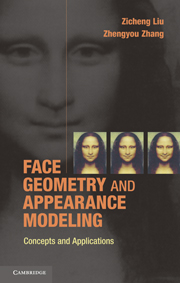11 - Human computer interaction
from PART III - APPLICATIONS
Published online by Cambridge University Press: 01 June 2011
Summary
Ever since the birth of the computer, people have been fascinated by the problem of how to improve the interaction between human users and computers so that it feels natural to users. People would love the computers to behave more like humans instead of machines as it will make computers easier to use and more receptive to a user's needs. To achieve natural interaction, the computer needs to be intelligent enough to understand the world and to behave like a human. One type of systems that many researchers have developed to show-case natural interaction is conversational agents. A conversational agent has a visual representation, which is typically a photorealistic-looking avatar. It is capable of understanding the user's needs through audio and visual sensors, and furthermore, it provides audio and visual feedback to the user. We will describe a conversational agent in Section 11.1.
This chapter will describe another related but very different technology, called human interactive proof (HIP). In some sense, the goal of the HIP system is exactly the opposite of that of the conversational agent. It assumes that there is a gap between the intelligence of the computer and the intelligence of human users. A HIP system exploits this gap to tell a computer program from a human user so that Web services that are designed for human users are not abused by malicious computer programs. One interesting technology that is related to faces is the face-based HIP system, which will be described in Section 11.2.
- Type
- Chapter
- Information
- Face Geometry and Appearance ModelingConcepts and Applications, pp. 257 - 278Publisher: Cambridge University PressPrint publication year: 2011



